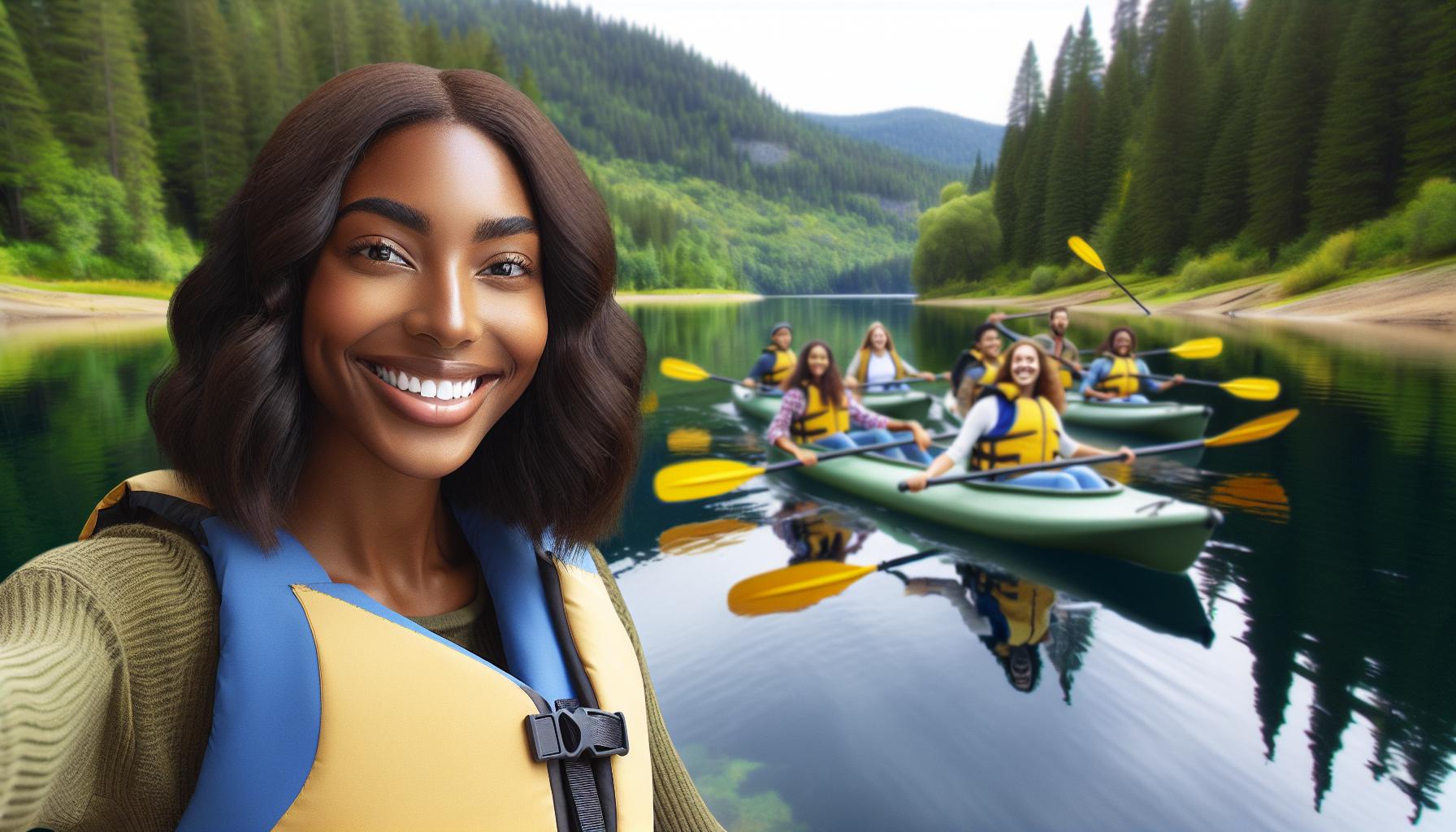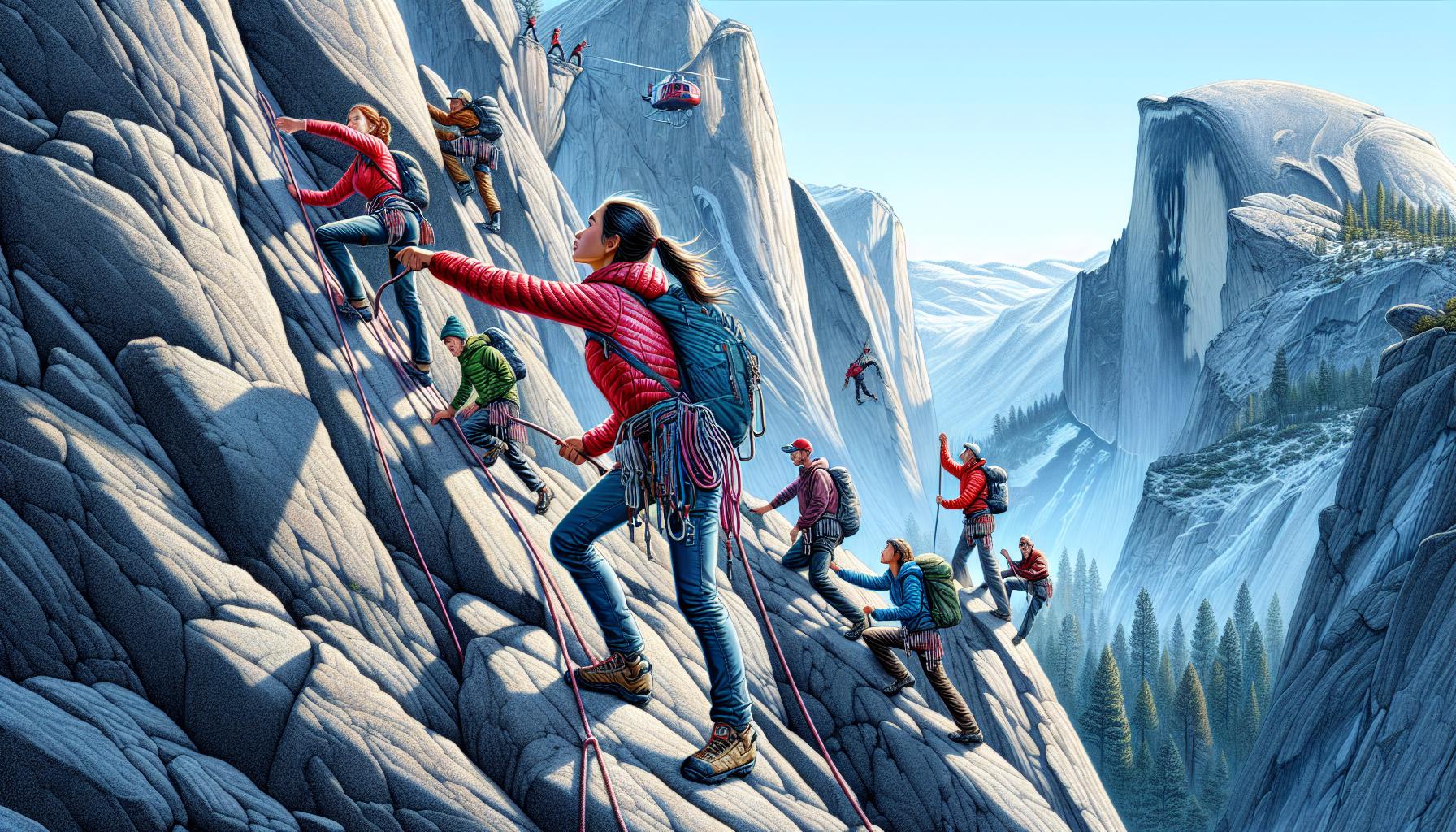Key Takeaways
- Diverse Activities: Adventure tourism encompasses a broad range of activities such as extreme sports, water sports, wildlife encounters, trekking, and cultural adventures, catering to various interests and skill levels.
- Types of Adventure: Adventure tourism is categorized into hard (high-risk, intense experiences), soft (moderate challenges for families), and educational (combining learning with exploration) adventures.
- Popular Pursuits: Key activities include hiking, rock climbing, kayaking, and snorkeling, which enhance connection with nature while providing excitement.
- Global Destinations: Top adventure tourism locations include tropical spots like Bali and Costa Rica, as well as mountainous regions such as the Swiss Alps and Patagonia, offering unique experiences suited to thrill-seekers.
- Safety and Accessibility: Safeguards are essential in adventure tourism; many activities offer guided experiences and professional training to ensure safety while enjoying the thrill.
- Cultural Connections: Adventure tourism fosters enriching experiences through cultural immersion and educational activities, enhancing appreciation for local traditions and environmental conservation.
Adventure tourism has exploded in popularity, drawing thrill-seekers and nature lovers alike to explore the great outdoors. With a diverse range of activities available, travelers can immerse themselves in experiences that challenge their limits and ignite their sense of adventure. From scaling towering mountains to diving into vibrant coral reefs, the options are endless.
Different types of adventure tourism cater to various interests and skill levels. Whether it’s trekking through dense rainforests, navigating white-water rapids, or embarking on a wildlife safari, each adventure offers unique thrills and unforgettable memories. As travelers seek more than just relaxation, understanding these types of adventure tourism can help them choose the perfect experience that aligns with their passions and aspirations.
Types of Adventure Tourism
Adventure tourism encompasses a range of exhilarating activities designed for thrill-seekers and nature lovers. This form of tourism prioritizes unique experiences, encouraging participants to explore the great outdoors while engaging in physically demanding pursuits.
Types of adventure tourism include:
- Extreme Sports: Activities like bungee jumping, skydiving, and paragliding offer adrenaline-pumping experiences. These sports attract individuals seeking intense challenges.
- Water Sports: Experiences such as surfing, kayaking, and white-water rafting appeal to water enthusiasts. Each activity provides chances to connect with nature while pushing personal limits.
- Wildlife Encounters: Safaris, birdwatching, and marine tours allow travelers to observe animals in their natural habitats. These adventures foster appreciation for biodiversity and conservation efforts.
- Trekking and Hiking: Routes ranging from easy walks to strenuous treks satisfy various skill levels. Popular locations include national parks and mountainous regions, providing scenic landscapes.
- Caving and Spelunking: Exploring caves presents a unique underground adventure. Participants witness stunning rock formations and underground ecosystems.
- Cultural Adventures: Engaging with local cultures through homestays, traditional ceremonies, and community projects results in enriching experiences. These adventures create connections with diverse cultures and traditions.
Understanding these categories enables travelers to choose experiences aligned with their interests and skill levels, enhancing their adventure tourism journey.
Types of Adventure Tourism

Adventure tourism encompasses various categories that cater to different interests and experiences. Understanding these types enables travelers to select activities that match their thrill level and personal aspirations.
Hard Adventure Tourism
Hard adventure tourism targets thrill-seekers who crave intense experiences. Activities often involve high physical exertion and considerable risk. Examples include:
- Rock Climbing: Scaling natural rock formations, often requiring technical skills and equipment.
- White-Water Rafting: Navigating turbulent river currents in inflatable rafts, usually classified by difficulty levels.
- Skydiving: Jumping from aircraft with a parachute, offering breathtaking views and extreme adrenaline.
- Mountain Biking: Riding on rugged terrains, demanding strong biking skills and endurance.
These activities typically necessitate prior training or experience and may involve safety measures like guided tours or equipment rentals.
Soft Adventure Tourism
Soft adventure tourism appeals to individuals seeking moderate challenges alongside enjoyable experiences. These activities emphasize safety and accessibility, making them ideal for families or those new to adventure sports. Common examples include:
- Hiking: Exploring trails of varying difficulty that showcase natural scenery and wildlife.
- Kayaking: Paddling through calm waters, allowing for exploration of lakes and rivers.
- Snorkeling: Observing marine life in shallow waters, accessible to various skill levels.
- Wildlife Watching: Engaging in tours to view animals in their natural habitats, promoting conservation awareness.
These experiences prioritize enjoyment and natural immersion over extreme challenges.
Educational Adventure Tourism
Educational adventure tourism combines learning with exploration, aiming to enrich travelers’ knowledge about culture, nature, and the environment. It often includes:
- Eco-Tours: Adventures focused on sustainability and local ecosystems, educating participants about conservation efforts.
- Cultural Immersion: Engaging with local communities to learn traditional practices, customs, and lifestyles.
- Workshops: Participating in hands-on activities, such as cooking classes or craft-making, fostering a deeper cultural connection.
- Nature Expeditions: Exploring unique ecosystems while learning about flora and fauna through guided tours.
This type of adventure fosters meaningful connections and understanding, making it an enriching component of the adventure tourism landscape.
Popular Activities in Adventure Tourism

Adventure tourism includes a variety of thrilling activities that attract diverse individuals. Participants engage in experiences that align with their interests and comfort levels.
Trekking and Hiking
Trekking and hiking cater to a wide audience, from beginners to seasoned adventurers. Trails vary in difficulty and scenery, offering opportunities to explore national parks, mountains, or unique ecosystems. Guided treks enhance safety and provide insights into local flora and fauna. Notable destinations include the Inca Trail in Peru or the Appalachian Trail in the United States.
Rock Climbing
Rock climbing appeals to adrenaline enthusiasts seeking physical challenges. Indoor climbing gyms introduce beginners to the sport, while outdoor routes offer varying levels of difficulty. Popular climbing locations include Joshua Tree National Park and Yosemite National Park, both in California. Safety equipment like harnesses and helmets is essential, and often, experienced guides assist in enhancing the climbing experience.
Water Sports
Water sports encompass numerous activities that provide excitement and adventure. Kayaking and canoeing allow exploration of rivers and lakes. Surfing offers a thrilling connection to ocean waves, while scuba diving unveils underwater ecosystems. Popular spots for water sports include the Great Barrier Reef in Australia for diving and the beaches of Hawaii for surfing. Equipment rentals and professional lessons are widely available to promote safety and enjoyment.
Destinations for Adventure Tourism

Adventure tourism offers a range of destinations that appeal to thrill-seekers and nature lovers alike. Places around the globe provide unique experiences that cater to diverse interests in adventure activities.
Tropical Locations
Tropical destinations, characterized by warm waters and lush landscapes, attract adventurers seeking fun in the sun. Popular spots include:
- Bali, Indonesia: Famous for surfing, scuba diving, and vibrant nightlife.
- Costa Rica: Known for zip-lining through rainforest canopies, white-water rafting on the Pacuare River, and wildlife watching in abundant national parks.
- Hawaii, USA: Offers hiking on volcanic craters, snorkeling at coral reefs, and surfing along famous beaches.
These locations provide a mix of relaxation and adrenaline, appealing to varying skill levels.
Mountainous Regions
Mountainous regions present stunning natural beauty and adventure challenges for outdoor enthusiasts. Key destinations include:
- Colorado, USA: Renowned for hiking, skiing in the Rockies, and mountain biking on scenic trails.
- Patagonia, Chile and Argentina: Features trekking in breathtaking environments, with iconic routes like the W Trek in Torres del Paine.
- The Swiss Alps: Offers extensive climbing opportunities and skiing in snow-capped peaks, along with picturesque villages.
Adventure seekers experience breathtaking landscapes while engaging in thrilling activities, making these regions ideal for those drawn to mountain adventures.
Rich Tapestry of Experiences
Adventure tourism offers a rich tapestry of experiences that cater to a wide range of interests and skill levels. Whether one seeks the thrill of extreme sports or the tranquility of nature walks there’s something for everyone. By understanding the different types of adventure tourism available travelers can make informed choices that align with their personal passions.
This journey into adventure not only fosters a deeper appreciation for nature and culture but also creates lasting memories. Embracing the spirit of adventure can lead to transformative experiences that resonate long after the trip ends. Exploring the great outdoors has never been more inviting.